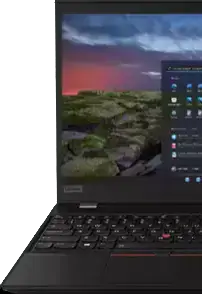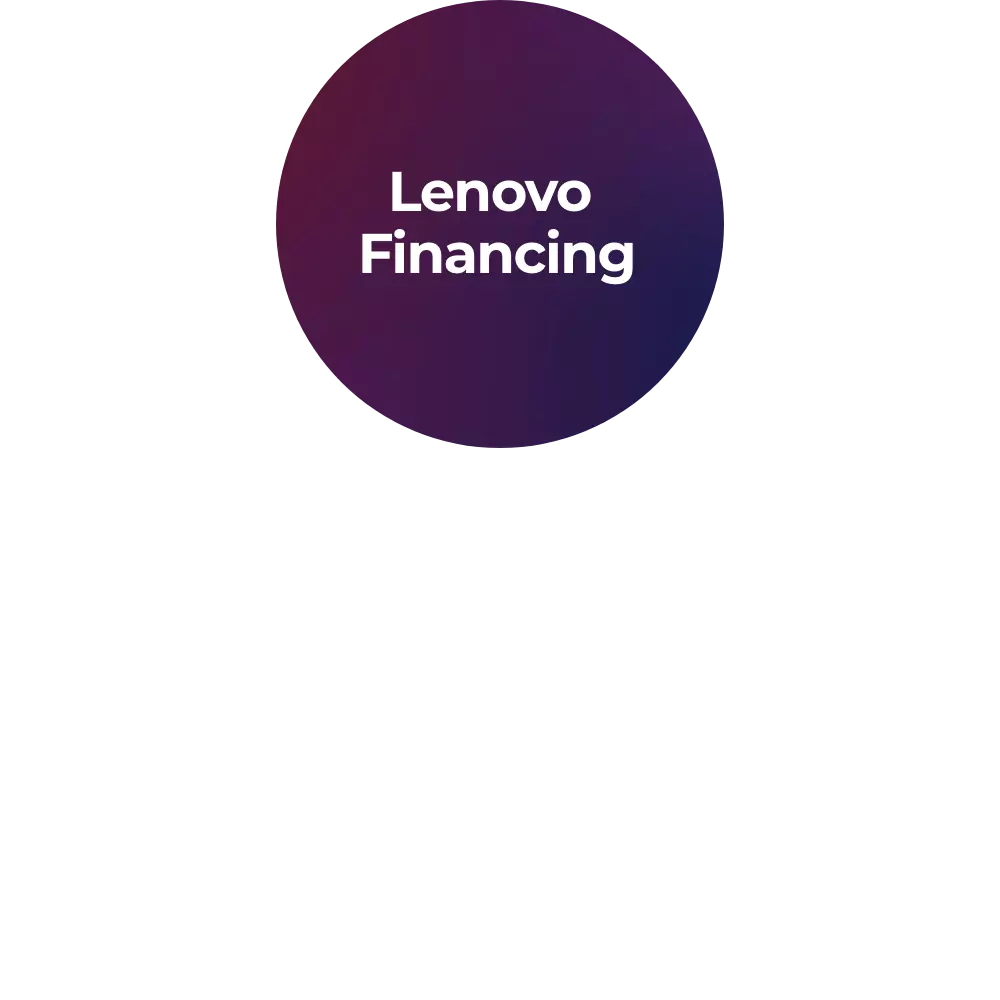What is an operating system (OS)?
An OS or operating system is the fundamental software that allows us to interact with and use our computers and smartphones. With this powerful tool, you can juggle between applications, watching movies, writing documents, and many other tasks. What OS you use makes a great difference in how your computer works. There are variations of operating systems available to choose from that vary greatly in look and feel.
But what exactly does an operating system do? At its core, the OS serves as a vital bridge between the user and the computer's hardware. Without it, every application would need to include its own interface and manage complex tasks like handling disk storage and network interfaces directly. This complexity would make software development cumbersome and inefficient.
Key functions of an operating system:
- System-level management: The OS takes care of essential tasks such as sending network packets and displaying content on your screen, allowing applications to run smoothly without needing to manage these processes themselves.
- Intermediary role: It acts as an intermediary, providing a consistent interface for applications to interact with hardware, ensuring seamless operation regardless of the underlying hardware specifics.
- Efficiency in development: By standardizing how resources are accessed, the OS significantly reduces the time and effort required to develop and debug applications. This standardization allows developers to focus more on innovation rather than compatibility issues.
- User interaction: The OS interface lets users control and configure their systems effortlessly, providing a unified experience for managing both software and hardware components.
In essence, the operating system is the unsung hero that makes modern computing possible, quietly performing critical tasks behind the scenes to ensure our digital experiences are both powerful and intuitive.
How does an operating system manage applications?
An OS or operating system is the fundamental software that allows us to interact with and use our computers and smartphones. With this powerful tool, you can juggle between applications, watching movies, writing documents, and many other tasks. What OS you use makes a great difference in how your computer works. There are variations of operating systems available to choose from that vary greatly in look and feel.
An operating system not only facilitates these everyday tasks but also manages a complex interplay of processes behind the scenes. Here's how:
- Device driver utilization: The OS uses a library of device drivers to ensure that applications can communicate effectively with the hardware. This means when you open a program, the OS translates its needs into commands the hardware understands.
- Resource allocation: By managing processors, memory, and other hardware components, the OS ensures that each application gets the resources it needs. This is why you can run multiple apps simultaneously without your system grinding to a halt.
- Application management: It handles the launch and coordination of applications, allowing for seamless multitasking. The OS shares processor time among various tasks, ensuring they operate smoothly.
- Error handling and stability: The OS also takes care of any interruptions or errors, maintaining stability by managing memory and resolving conflicts between applications.
In essence, the operating system is the backbone of your computing experience, transforming your computer or smartphone into a versatile tool capable of handling a multitude of tasks with ease.
How does an OS perform memory management?
It efficiently manages memory allocation to ensure that applications and the OS itself can operate without causing disruptions or conflicts with other running processes.
How does an OS handle multitasking?
It allows multiple processes, or threads, to share the available resources of processors through timesharing, enabling different tasks to run simultaneously without conflict.
What components does an OS manage?
The OS manages various hardware components, including processors, memory devices, chipsets, storage, networking, and communication interfaces like VGA, HDMI, and USB, as well as subsystem interfaces like PCI Express.
How does an OS interact with hardware?
An operating system utilizes a large library of device drivers to customize its interactions with the specific hardware it operates on. This allows the OS to effectively translate commands from applications into actions that the hardware can execute.
How does an OS work?
The OS acts as a mediator between the user and the computer's hardware. It communicates with the different parts of the computer, such as the CPU, memory, storage devices, input/output devices, etc., to ensure that they all work together smoothly to execute commands from applications.
Why do we need an OS?
Without an OS, it would be impossible for us to interact with our computers in a meaningful way. The OS allows us to run programs, store files, connect to networks, and perform countless other tasks that we take for granted.
What is the role of a user interface in an operating system?
A user interface (UI) serves as the critical bridge between the user and the computer's operating system, enabling interaction and functionality access. It plays a pivotal role by offering different ways for users to perform tasks effortlessly.
Types of user interfaces
- Graphical User Interface (GUI): GUIs are user-friendly, visual interfaces that incorporate icons, buttons, and menus. Users typically interact with a GUI using a mouse, stylus, or touch controls, allowing them to easily launch applications and execute system functions through point-and-click actions.
- Command-Line Interface (CLI): A CLI requires text-based commands, typed into a console, to execute tasks. It is favored by advanced users and system administrators for its direct control and scripting capabilities, allowing efficient manipulation of operating system functions.
- Hybrid Interfaces: Some systems offer a combination of GUI and CLI, catering to a broader range of user skills and preferences.
The essential functions of user interfaces:
- Facilitating user interaction: UIs facilitate the way users engage with the system, transforming complex sequences into simplified, manageable actions.
- Providing accessibility: By offering multiple modes of interaction, user interfaces enhance accessibility, accommodating various user needs and abilities.
- Enhancing productivity: UIs are designed to streamline workflows, making it quicker and simpler for users to perform tasks, access information, and utilize system resources.
- Ensuring user experience: A well-designed UI provides an intuitive and satisfying user experience, reducing the learning curve and minimizing potential errors.
In essence, the user interface is not merely a tool but a crucial component that defines how users perceive and interact with an operating system, impacting overall user satisfaction and efficiency.
What are some common examples of operating systems?
Common operating systems include Windows, various Linux®/Unix distributions such as Ubuntu, and Android™, which is widely used on smartphones and tablets. These systems manage hardware and software, providing the foundation needed to run applications and perform tasks. Additionally, specialized operating systems are often used in areas like servers, embedded systems, and gaming consoles, showcasing the diversity of operating system environments.
How does an OS manage memory?
The OS allocates memory space to running processes based on their needs and priority levels. It also manages virtual memory by swapping data between RAM and hard drive when necessary.
What is multitasking in an OS?
Multitasking refers to an OS's ability to run multiple programs simultaneously by dividing CPU time among them or allowing them to run concurrently on different cores.
How does an OS manage file systems?
The OS manages file systems by organizing data into directories or folders and assigning permissions or access rights to users for reading, writing or deleting files.
How does an operating system manage devices?
Device drivers are software programs that enable communication between hardware devices and the OS. The OS manages these drivers by loading or unloading them as needed and providing a standard interface for applications to access them.
Identifying and configuring devices
An operating system plays a crucial role in identifying and configuring devices. It recognizes hardware components such as printers, keyboards, and other peripherals, installing the necessary device drivers and interfaces. This process allows applications to interact with hardware seamlessly, without needing specific codes or commands tailored to each device.
Examples of device management
The OS manages a variety of devices, including:
- USB ports: Facilitating communication with external devices.
- Networking ports: Enabling connectivity and data exchange.
- Graphics devices: Such as graphics processing units (GPUs), essential for rendering images and video.
- Motherboard chipsets: Which integrate various components for system performance.
- Storage devices: Including adapters and disks formatted with compatible file systems.
Maintaining and updating drivers
For optimal performance and security, the OS is responsible for updating drivers as manufacturers release patches. When hardware is replaced, the OS swiftly installs and configures new drivers, ensuring continuity of service and functionality.
In essence, the operating system streamlines the complex process of device management, offering a cohesive environment where hardware and applications interact efficiently.
How does networking work in an OS?
The OS provides networking capabilities through protocols such as TCP/IP stack, which enables communication between computers over a network or internet connection.
What are some recent developments in operating systems technology?
Recent advancements include improvements in security features (such as encryption), virtualization technologies (allowing multiple instances of the same or different operating systems on one machine), containerization (isolating applications from each other while sharing resources), and cloud-based computing (accessing remote servers via internet connectivity), etc.
To ensure robust security, operating systems implement policies defined and authorized by IT departments. These policies are crucial for enforcing security access controls, ensuring that users and applications have appropriate permissions. Encryption plays a significant role in safeguarding data, providing an additional layer of protection for both users and applications.
- Security Access Controls: These controls limit access to sensitive information, ensuring only authorized users can interact with certain data.
- Encryption: By encrypting data, operating systems protect information from unauthorized access, maintaining privacy and integrity.
Together, these features help create a secure environment for both users and applications, reflecting the continuous evolution of operating systems in response to emerging security challenges.
What is network operating systems?
Network operating systems (NOS) are specialized systems designed to manage and facilitate communication between devices within a local area network (LAN). These systems provide the necessary framework to understand various network protocols, enabling devices to create, exchange, and interpret network packets effectively.
Key features of network operating systems:
- Communication protocols: NOS supports a variety of communication protocols essential for seamless interaction between networked devices.
- Packet management: They handle the creation, exchange, and disassembly of network packets to ensure data is accurately transmitted and received.
- Device coordination: NOS helps in coordinating the tasks and resources of multiple devices connected within the network.
In summary, while the role of traditional network operating systems has shifted, their foundational principles continue to underpin the networking capabilities of both modern operating systems and specialized network devices.
How does an operating system monitor performance and detect errors?
When an error or crash occurs, the OS may display an error message or attempt to recover from the problem automatically. If recovery is not possible, the system may need to be restarted or shut down.
To prevent such issues, the operating system continuously monitors computer performance. This involves generating system logs that are pivotal for fine-tuning and ensuring optimal performance. These logs provide insights into resource utilization, helping to identify performance slowdowns and bottlenecks.
Furthermore, the OS employs a systematic approach to error resolution. By analyzing these logs, it can detect potential issues before they escalate into more significant problems. This proactive monitoring helps maintain system stability and efficiency, minimizing the likelihood of errors and crashes.
What tools or methods does the OS use for performance monitoring?
The OS employs system logs as a primary tool, which document various performance metrics and events, providing a comprehensive overview for analysis and optimization.
How does the OS monitor performance continuously?
The operating system engages in ongoing surveillance of the computer's performance, ensuring that it captures real-time data to maintain optimal system operations.
What is kernel-level programming in an OS?
Kernel-level programming involves writing software that interacts directly with the operating system's core functions (the kernel). This type of programming requires specialized knowledge and can be used to create device drivers, security software, and other system-level applications.
What is process scheduling and prioritization in an operating system?
In a multitasking operating system, multiple applications are often running simultaneously, requiring a sophisticated system to manage how these applications share resources. This is where process scheduling and prioritization come into play.
Process scheduling:
This involves the operating system determining which applications should execute at any given moment. The OS allocates time slots to each process, ensuring that the CPU can switch from one task to another efficiently. This time-sharing mechanism enables the smooth execution of multiple programs without interference.
Prioritization:
Not all processes are created equal. Certain tasks demand more urgent attention, while others can wait. The operating system assigns priority levels to each process, meaning a high-priority task might interrupt a lower-priority one if necessary. For example, a user-initiated action, like launching a web browser, may take precedence over less critical background tasks.
To illustrate, consider a scenario where a resource-intensive batch job—such as a large-scale data analysis—is scheduled. The operating system might decide to postpone this job during peak hours to allow for smoother operation of interactive applications like word processors or web browsers.
In essence, process scheduling and prioritization work together to enhance system efficiency, ensure fair resource distribution, and improve user experience by managing how and when applications run. This orchestration is crucial for maintaining performance and responsiveness in any multitasking environment.
How does an operating system handle hardware provisioning and execution?
Operating systems (OS) play a crucial role in managing hardware resources, allowing applications to function smoothly without bogging them down with complex hardware details. Here's a breakdown of how they handle this process:
Abstracting hardware complexity
Operating systems provide a layer of abstraction between applications and hardware. This means that applications don't need to interact directly with hardware components. Instead, they rely on the OS to communicate with the underlying hardware.
API support for seamless interaction
By offering Application Programming Interfaces (APIs), an OS enables applications to access system functions effortlessly. For instance:
- Input/Output Operations: Programs can capture user input from devices like keyboards and mice without needing to directly handle hardware-specific details.
- Graphical User Interface (GUI): Applications can create interactive elements like dialogs and buttons through APIs, ensuring consistent look and functionality across different devices.
- File Management: Reading from and writing to storage devices is streamlined, allowing programs to handle data storage efficiently without knowing the specifics of each storage type.
Tailored application development
Most applications are designed to run on specific operating systems, leveraging these built-in capabilities. This design choice ensures optimal performance and resource management.
Operating systems effectively bridge the gap between software needs and hardware capabilities, ensuring applications run efficiently and users enjoy seamless interaction with their devices.
How does parallel processing work in an operating system?
Parallel processing is a method used by an operating system (OS) to enhance computing efficiency by splitting tasks across multiple processors. This approach allows a program to execute different parts of its code simultaneously, rather than sequentially. But how does this work?
- Task Division and Management: At its core, parallel processing involves dividing a task into smaller sub-tasks. The operating system plays a crucial role here. It determines how to partition the work and assigns these segments to various processors. By doing so, multiple instructions can be executed at the same time, significantly speeding up the overall process.
- Multi-Processor Coordination: The OS ensures that these processors work in harmony. It manages the data flow and communication between them to prevent conflicts and inefficiencies. For instance, when one processor completes a task, the OS can reallocate it to another sub-task, optimizing the use of available processing power.
- Load Balancing: An essential aspect of parallel processing is load balancing. The operating system dynamically distributes the workload to ensure no single processor is overwhelmed. It monitors the performance and, if necessary, adjusts the task distribution to maintain an even workload across all available processors.
Example Applications of Parallel Processing
Many applications benefit from parallel processing, particularly those requiring substantial computational power. This includes fields like scientific simulations, video rendering, and data analysis. By utilizing multiple processors effectively, these tasks are completed faster and more efficiently than would be possible on a single processor.
In summary, parallel processing leverages the capabilities of an operating system to divide and conquer tasks by spreading them across several processors. This leads to faster and more efficient program execution, thereby harnessing the full potential of modern computing systems.
How does an operating system manage backup and recovery?
An operating system (OS) plays a crucial role in managing data integrity through its backup and recovery capabilities. Here's a breakdown of how it accomplishes this:
- Automated Backup Scheduling:
- Most operating systems allow you to schedule backups at various intervals, such as hourly, daily, or weekly.
- These scheduled tasks can run automatically, reducing the need for manual intervention by IT teams or users.
- This scheduling ensures your data is consistently protected, avoiding human error.
- Data Storage and Redundancy:
- Backups can be stored locally on physical storage devices or in the cloud via services from providers like Google Cloud or Microsoft Azure.
- The OS ensures that these backups are stored securely and can manage redundancy, which minimizes data loss risks.
- Seamless Recovery Process:
- In the event of a data loss incident, such as a system crash or outage, the OS provides straightforward recovery options.
- Users can retrieve the most recent backup or choose from previous versions, depending on the severity of the issue and the backup strategy implemented.
- User-Friendly Interface:
- Many operating systems come with a user-friendly interface for backup management, often with intuitive wizards and prompts.
- This UI helps even non-technical users to set up and manage backups effectively.
- Integration with Third-Party Tools:
Operating systems often support integration with specialized backup software like Acronis True Image or Backblaze, which offer enhanced features and protection layers.
By leveraging these features, an operating system ensures that critical data remains safe and is quickly recoverable, thereby minimizing downtime and maintaining business continuity.
How does an OS manage user accounts?
The OS manages user accounts by storing login credentials (such as usernames and passwords) in a secure database and assigning permissions/access rights to different users based on their roles (e.g., administrator vs. standard user).
What are some challenges facing modern operating systems?
One challenge is keeping up with constantly evolving security threats such as malware, viruses, and hacking attempts. Another challenge is providing seamless integration with new technologies such as artificial intelligence, machine learning, and the Internet of Things (IoT). Additionally, maintaining compatibility with legacy applications while still innovating can be a balancing act for developers.
What is virtualization in the context of operating systems?
Virtualization in the context of operating systems allows for multiple operating systems to run independently on a single physical machine. This is achieved by creating software-based partitions that isolate each OS, enabling them to function without interference from one another.
An OS can act as a host for virtual machines (VMs) by providing resources such as CPU, memory, and storage to multiple VMs running on top of it. The OS also manages the communication between the VMs and the physical hardware.
This setup allows users to run multiple applications simultaneously, each within its own dedicated OS, optimizing performance and resource utilization. By leveraging virtualization, a single workstation can efficiently handle various tasks, enhancing overall productivity.
How can virtualization optimize performance?
By allowing each application to have a dedicated operating system, virtualization ensures that resources are allocated efficiently, reducing competition for processing power and memory, and therefore optimizing the performance of the system as a whole.
What is the benefit of virtualization in terms of application management?
Virtualization allows multiple applications to run at the same time on one workstation, each within its own operating system environment. This leads to improved management and performance of applications, as they can operate without interference from one another.
What is the purpose of virtualization?
The primary purpose of virtualization is to enable the simultaneous operation of multiple applications, each supported by its own dedicated operating system, on a single machine. This helps in optimizing the overall performance of the system.
How does an OS manage power consumption?
Modern operating systems have power management features that allow them to adjust system settings to conserve energy when not in use. This includes reducing screen brightness, turning off unused peripherals, and putting the system into sleep or hibernation mode.
What is an real-time operating system (RTOS)?
An RTOS is an operating system designed for applications that require precise timing and fast response times, such as industrial control systems, robotics, and medical devices. These systems prioritize tasks based on their urgency and ensure that critical operations are executed without delay.
How does an OS handle input/output operation?
The OS manages input/output operations by providing standardized interfaces for applications to communicate with input/output devices such as keyboards, mice, printers, and displays. It also handles data transfer between these devices and the CPU/memory.
What are embedded operating systems?
Embedded operating systems are specialized software designed for specific, non-general-purpose computing devices. These devices often include gadgets like smart home assistants, ATMs, aircraft systems, retail terminals, and Internet of Things (IoT) devices.
Key Characteristics of Embedded Operating Systems:
- Task-Specific Design: Unlike general-purpose systems, embedded OSes are streamlined to perform singular, critical tasks efficiently.
- Performance & Reliability: They focus on speed and stability. Even under error conditions, these systems are built to continue functioning without fail.
- Integration into Hardware: Usually, these operating systems are pre-installed on chips embedded within the devices themselves.
An example would be the operating system in a medical device, where it must operate seamlessly to ensure patient safety. Embedded Linux® is one of the well-known types of embedded OS.
In essence, the primary goal of an embedded OS is to provide reliable and efficient service tailored precisely to the needs of the device it's supporting.
What are cluster operating systems?
Cluster operating systems (OSes) are specially designed to manage and coordinate a group of interconnected computers, enabling them to function as a unified, powerful system. This type of setup is essential for tasks that demand extensive computational power and speed.
Key Features of Cluster Operating Systems
- Unified Functionality: Cluster OSes allow multiple computers to work together on complex tasks, essentially making them operate as one cohesive system.
- Parallel Processing: They excel in environments that require simultaneous data processing. This includes scenarios like artificial intelligence applications, where data needs to be processed in parallel to achieve quicker and more efficient results.
- High-Performance Tasks: For industries that require rapid and real-time processing of large volumes of transactions—such as financial trading systems—cluster operating systems are invaluable. They ensure that thousands of transactions can be managed efficiently without delays.
What are distributed operating systems?
Distributed operating systems (OS) are a sophisticated type of OS designed to manage a network of interconnected computers, enabling them to operate as a cohesive unit. Unlike traditional operating systems that manage resources for a single machine, distributed OSes extend this capability across multiple devices, often referred to as nodes, in a network.
Key Features of Distributed Operating Systems
- Resource Sharing: These systems excel in sharing computational resources, such as processing power and memory, among numerous connected computers. This is particularly useful for thin-client setups, where individual devices have minimal processing power and storage capacity.
- Access Management: Users can access applications and data hosted on network servers rather than relying on local machines. The OS efficiently manages access requests from various users, allocating resources as needed to ensure optimal performance and security.
- Scalability and Flexibility: With the ability to add more nodes to the network, distributed OSes provide scalability, accommodating the growing demands of user applications and data processing without a hitch.
How They Work
In a typical setup, distributed operating systems facilitate seamless interaction between multiple computers. The system handles complexities like synchronization, data redundancy, and communication protocols to ensure cohesive functioning across diverse hardware.
Popular Examples
Some well-known implementations of distributed operating systems include Microsoft Windows Server and an array of Linux® distributions tailored for server environments. These platforms are esteemed for their robustness and capability to support extensive, multi-user operations.
In essence, distributed operating systems redefine how we think about computing, transforming a group of networked machines into a powerful, singular system capable of meeting contemporary computational needs.
What are the different types of operating systems?
Different types of operating systems have unique strengths and weaknesses depending on their intended use cases. For example, Windows is known for its user-friendly interface and broad compatibility with software or hardware but may be less secure than other options. Linux® or Unix distributions are highly customizable and powerful but can be more difficult to learn or use for average users.
- General-Purpose Operating Systems: General-purpose operating systems are versatile, supporting a wide range of applications across various hardware. They are designed to manage multiple tasks simultaneously, making them ideal for desktop and laptop environments. These systems include Windows, known for its widespread adoption.
- Mobile Operating Systems: Designed for smartphones and tablets, mobile operating systems focus on efficient performance and user responsiveness. They are streamlined to conserve resources while supporting media streaming and communication.
- Embedded Operating Systems: Embedded OSes are tailored for specific devices like home assistants and ATMs. They are minimalistic, focusing on performance and reliability. These systems operate within dedicated hardware, such as medical devices, where consistent functionality is critical. Embedded Linux® is a common example.
- Network and Real-Time Operating Systems: Network operating systems facilitate communication between devices on a local network, while real-time operating systems ensure timely responses in critical environments, like industrial control systems. Both types are specialized, with the latter prioritizing predictability and speed to prevent disasters.
- Distributed and Cluster Operating Systems: Distributed OSes manage resources across networked workstations, enabling shared applications and data access. In contrast, cluster operating systems coordinate multiple computers to tackle complex tasks, such as AI processing or high-frequency trading. These systems exemplify the power of collaborative computing.
By understanding these different types, users and developers can choose the most suitable operating system for their specific needs, balancing factors like ease of use, performance, and scalability.
What are the technical requirements or constraints for certain types of operating systems?
Mobile OSes must operate efficiently with limited resources, ensuring smooth user interactions. Real-time OSes require strict timing constraints to function without delays, while embedded systems need to be highly resilient and capable of handling errors gracefully. Network OSes must efficiently manage communication protocols and data exchange, whereas distributed systems should optimize resource sharing and access control across numerous users.
How do specialized operating systems differ from general-purpose ones?
Specialized OSes are tailored for specific tasks, focusing on efficiency and reliability in particular environments. For instance, embedded OSes are dedicated to single functions with minimal resources, while real-time OSes prioritize immediate response times. General-purpose OSes, however, are designed to handle a variety of applications and processes simultaneously across different hardware.
What is the difference between a 32-bit and 64-bit operating system?
A 32-bit operating system can only use up to 4GB of RAM, while a 64-bit operating system can theoretically use up to 16 exabytes of RAM (although practical limits are much lower). Additionally, 64-bit systems can execute larger chunks of data at once, which can lead to faster performance.
How does an OS handle memory management?
The OS manages memory by allocating space in RAM for active processes and swapping out less-used data to virtual memory on disk. It also handles fragmentation by reorganizing memory blocks as needed.
What is the role of an OS in file management?
An OS provides tools for creating, organizing, and accessing files or folders on disk storage devices. This includes functions such as creating or deleting files/folders, moving or copying files between directories or drives, and searching for specific files based on criteria such as name or extension.
What are mobile operating systems?
Mobile operating systems are designed specifically for smartphones or tablets and have different interface requirements than desktop or laptop systems. They also tend to prioritize battery life over performance and may have limited hardware resources compared to full-sized computers.
These systems are optimized for mobile computing and communication-centric devices, which means they must efficiently manage limited computing resources. Mobile OSs are scaled back in size and complexity to minimize their own resource use, ensuring enough capacity for running applications seamlessly.
To achieve this, mobile operating systems emphasize efficient performance, quick user responsiveness, and effective data handling. Supporting tasks like media streaming are crucial for user satisfaction. In essence, while desktop systems focus on maximizing performance, mobile systems balance power consumption with functionality to maintain device portability and usability.
What are the performance priorities of mobile operating systems?
They prioritize efficient performance and user responsiveness, along with effective data management tasks like media streaming support.
What devices are mobile operating systems designed for?
Mobile operating systems are crafted for devices focused on mobile computing and communication, such as smartphones and tablets.














